- Home
- Larry Niven
Larry Niven’s Man-Kzin Wars - VII Page 4
Larry Niven’s Man-Kzin Wars - VII Read online
Page 4
He looked over my shoulder at it. “Winter Olympics, I think,” he said. “They were just starting to do things on a really big scale with team games then. The Space Age year.”
It dealt with a period before the literary era I specialized in and it didn’t mean a lot to me. I didn’t particularly like it, but for a low-grade ARM officer to possess a few lines of old books without specific clearance was not exactly an offense, even if it might amount to skating on thinnish ice. In any case I had other things to do now.
ARM had special facilities for deep hypnosis available for people like me, since memory and association are our most unique assets.
Certain specific parts of my childhood and juvenile memory had been blocked as a routine precaution when I joined ARM but the block was intended to be bypassed in a matter of need. It wasn’t perfect recall but I did bring back a clearer picture. An old, old book in my father’s collection, Great True Stories of Adventure for Boys, with a story of a strange tiger hunt and crude black-and-white line drawings. Including the drawing of that odd skull.
Memory-wipe is not a form of death, whatever some people say. It can be controlled and stopped at a certain point. An individual’s childhood memories might be left intact—they often were. I am not a killer. I am nothing remotely like a killer.
• CHAPTER 3
One of Japan’s ubiquitous television crews took to the streets last week to find out what people thought about the forthcoming fiftieth anniversary of Pearl Harbor…Such has been the rewriting of history in Japan that many teenagers had not even heard of Pearl Harbor and several expressed amazement Japan had fought a war with the United States.
—Gareth Alexander “The War Japan Chose to Forget,” Press Item, December 3, 1991
London was gearing up for the first rounds of “Graceful Willow,” and the streets were full of supporters wearing team colors when I arrived, bowing to one another, giving way in air-cars and on pedestrian walks, competing already among themselves in the game’s values of courtesy and noncompetitiveness.
Dr. Humphrey of the British Museum had been contacted and briefed to help me. Together we read through all of the very little literature we had been able to find on the specimen. Of course he was ARM too. He knew better than to ask why we were making this peculiar investigation.
The man who had taken the name of Sir Kay had had tears in his eyes when he was taken away, but he would in no other way betray fear. Why not? I knew how terrified he was. Was it something to do with courage, with the barbaric code of warlike “nobility” that they had dabbled in to their disaster? “Have you any conception of what you are destroying?” the girl who had called herself the Lady May had asked me when I identified myself and arrested them. Yes, I had a conception. ARM does not do what it does for nothing.
It took time to locate the storage data on the specimen, even with the search tools we had available, and then there was a further purely physical hunt for it, in the recesses of sealed vaults far underground, containing the detritus a great museum acquires over centuries.
An elevator took us down from street level past several floors of storage to a deep subbasement. There were ancient, primitive stuffed specimens of animals standing there with their hides falling apart into ghoulish sculptures of wires and bones. There were desiccated things in the bottoms of jars and crumbling stone figures that had once been worshiped. There were even mislaid pieces of sports history, such as a tiny rudimentary flying machine with open cockpit and three stubby wings, red fabric falling off its crumbling framework. The designers had given maneuverability and a rapid climb priority over all else. Some game long out of fashion.
Beyond this were further repositories in that great ancient warren of a building. We came to a row of shut metal doors, and entered another locked vault after consulting a plan.
The air was dank. Even cleaning machines had not been there for a long time. And then to a series of locked metal cupboards, so old they were actually rusted.
We found it at last, the label almost unreadable under dust. An ancient wooden box. The lid creaked as we prized it open.
The skull was huge, gray with age, and with some of the more delicate nasal bones obviously crumbled or broken in previous handling. There were several irregular, cracked holes.
Although these stacks were in Dr. Humphrey’s charge, he had apparently not seen it before. That was understandable. There were miles of shelving on compactus tracks.
“It’s no tiger,” he said. “It’s like no animal I’ve ever seen.”
“A freak?”
“No. No tiger so abnormal would have grown to adulthood.”
“What about these lesions?”
“I’ve seen them on specimens before. Gunshot wounds when it was killed. And look at this!” He gestured at the literature he had brought and then down at the thing itself. “Cranial tumor indeed!”
It took the two of us to turn the skull over. He inserted a probe. “That’s all braincase. Bigger than yours or mine.”
I had a picture of a skull sent by the Angel’s Pencil with me. There was no mistake about the identification: the Pencil’s “alien” skull was copied from this one. I left the British Museum’s storage section and headed for the archives, still as good as any in the world.
The Vaughn family were still in Australia. They had survived what happened there in 2025 and even emerged with some of their land intact and productive: The farm near the New South Wales rain forest which the colonel had retired to on his pension when all the British Empire was practically one country. I was there a few hours later.
Arthur Vaughn-Nguyen seemed cooperative when I presented myself as a Historian. He was in late middle age, probably about a hundred and ten, unattached. There was still farming going on, but robots did the work. He had two sons (so his genes must have checked out well) but they were not there. One, I gathered, was off-planet.
Perhaps he was talkative because he was bored. How many bored people there were! Or was he being too cooperative? I felt suspicious from the start. The farm had a sense of history about it, too, and not just because it belonged to one of the Survivor families.
Too much history, I thought, as I looked at some of the books and artifacts preserved in cases and along the walls of the main hall.
It was probably just as well that Vaughn-Nguyen did not know my thoughts, as I sat in his main living room with a live dog resting its head on my feet and a glass of Bungle-Bungle rum, a local delicacy said to date from Old Australia, in my hand. The family appeared to regard it as traditional. There was a suspicious amount of tradition left at the Vaughn station.
Colonel Vaughn himself was there, an ancient larger-than-life-size portrait hanging on the wall. He was rather as my reading had led me to imagine a “colonel” might be: crook nosed, wearing an elaborate jacket called a “uniform,” with decorations on it called “medals.” I had seen such things before, both in books and in the military fant cults. Somehow it struck me as odd and after a little thought I saw why: The man in the picture had no hair at all. No mustache, no eyebrows. It was anachronistic. I didn’t think there had been a fashion for hairlessness until modern cosmetics were developed.
Probably it didn’t matter. In those days men did lose their hair involuntarily. But this continuing public display of a military fant-type uniform was a different story. ARM should have paid the Vaughn-Nguyens a visit before.
A lot of this was headed for Black Hole. I wondered what compensation it would be necessary to pay the colonel’s descendant for the removal of his antiques. Not much. We had destroyed the market for this sort of gear long ago.
It reminded me of something from our first training. When what is now known as ARM began the prelude to the program, as long ago as the American and French advancements at the end of the eighteenth century, it had made one of its priorities the ridiculing and destruction of the notion of hereditary titles of honor.
It was amusing (our instructor had said) to think this had b
een done in the names of liberty, democracy, equality and progress, when the real purpose had been to consolidate power. Even constitutional monarchy had been destroyed by a prolonged and often subtle political and media campaign, removing the only significant institution that remained as a rival and therefore a check upon its power (apart from the churches, for which there were other plans).
Family history and traditions were dangerous. Interest in the memory of an “ancestor” was but a short step from family pride and loyalty, and that was clearly and totally inimical to the interests of Earth’s good government, or, as far as they were distinguishable, of ARM.
But if the Vaughn-Nguyens thought too much of the past, that was useful to me now.
“The old colonel’s tiger-man? Yes. Quite famous in its day,” he said. Then he added perfectly casually, “Would you like to see the skin?”
I had not been expecting this. I looked at Arthur Vaughn-Nguyen closely. What was he really up to?
“You have it here?”
“Why, yes.”
He led me into another room. The dog followed us for a few steps, and then stopped, making a peculiar noise.
“Is he all right?” I asked.
“You’ve just seen a family mystery in the flesh.” He said, “No animal will go into that room.” He laughed. “We say it’s haunted by a ghost tiger.”
Against the wall stood a large box of some dark wood, obviously very old, hand carved with decorations. It was much more elaborate than the one at the museum.
Another antique, and this time, I would have guessed, of great value. There was, I noticed, no electronic lock on it, no recording device. Impossible to prove when it had been opened last. Had any of the Angel’s Pencil crew been here? I didn’t fancy the time-consuming job of tracking down their movements over the last generation.
“It’s in there?”
“We keep it here. We used it for a rug once, but it was put away, a long time ago.”
It had been a crime to keep the skins of rare animals. In the days when there was a never-ending demand for material for the organ banks, and crimes, however minor, attracted only one punishment. Those days were long gone, but the Vaughn-Nguyens must have some genes for either courage or foolhardiness for one of their ancestors to have risked keeping the thing at all. Did this point to involvement in criminal behavior today?
“I’d like to see it very much,” I said.
The chest smelled bad when it was opened, not powerful at first, but like nothing I have ever smelled before.
Like nothing I have ever smelled before? There was something about that smell, something that made me want to be away from that place. I guessed what it was after a moment, though I had never encountered it before: It must be the tiger smell. I got it under control easily enough. I heard, from the next room, a howl and a frantic scrabble of claws on flooring as the dog fled.
My host pulled out the skin and rolled it out across the floor.
Although parts were missing, it was huge as the skull we had seen was huge. It had longer legs than any tiger and it was still a blazing orange. There were some darker markings but it was not a normal tiger’s striped pelt. It almost looked as if it had been made of some synthetic fabric (Perhaps it was. Well, that would be tested).
The head was enormous. It felt toylike when I examined it because the cavity where the skull had been was stuffed with some sort of papier-mâché, now crumbling. The jaws were set in a huge gape, and I thought absurdly for a moment how many feet must have caught on them when it was used as a rug. The eyes were glass balls, and the teeth ivory pegs.
The hind part and chest had been crudely stitched to pull it together around what I now guessed had been, assuming it was genuine, bullet holes.
“It hasn’t got a tail,” I said.
There was a ragged gap at the base of the spinal ridge where the pelt had been hacked.
“No,” said my host, “there was meant to be something wrong with the tail. They didn’t keep it.”
“There seems to be something wrong with everything about it,” I said. “But isn’t there a breed of tailless cat?”
“I think so. The face is a cat’s face, anyway. But look at those ears!”
A cat’s face, yes, even with the strangely large skull. The ears were complex arrangements, still flexible, reminding me of bat wings or bits of umbrella. They turned to something like leather at the outer parts, and ended raggedly in what might once have been membrane. There was something else about them, too. I examined the dark, gristly surfaces more closely.
“They’ve been tattooed.”
“Oh. With anything in particular?” He seemed not to have known this.
“I can’t tell.”
He got a lamp. Shining this through the outer membrane I could see a pattern. It seemed to be made up of…I called them “bones” for want of a better term.
“Who’d tattoo a tigers ears? And why?”
“Tattooing a live tiger would be a difficult job, I’d think. It must have been dead. Perhaps to identify it.”
“A creature as odd as this would hardly need further identification, I should think.”
“You’re right there. Look at the hands. That’s where the ‘Tiger-Man’ idea comes in.”
The oddly long forelimbs ended not in a tiger’s pug paws but in four-digited hands with black extremities. One of the digits on each was like a thumb.
Did they work like cat’s claws? I pressed the pad of one digit. Nothing happened. I pressed harder and a claw emerged. A black claw. I touched it and then jerked my finger back, to suck at a bleeding gash. It was razor sharp.
All about was the fear smell. And a hint of something like…ginger.
“There’s some of the colonel’s other stuff here, too,” he said. “It all goes together.”
“It looks as if it hasn’t been opened for a long time.”
“No. I was shown it as a child, but it was getting pretty moldy even then. I didn’t want to touch it too much, and since then there has hardly been a lot of call. The house was shut up for a long time.” He would have been a child, I guess, about a hundred years before.
A wooden grating divided the top and bottom of the chest. The lower part contained rotting cloth. Some of this had once been dyed red, and on some was gold lace and wire, still unfaded. Parts of the colonels “uniforms,” I supposed.
The cloth parted at the folds as if cut with a knife. I had not realized before that ancient fabrics were so weak and perishable—or had they been weakened chemically to seem ancient?
Two metal things I recognized from ARM’s special history course as weapons, one, called a “sword,” for cutting, one, called a “revolver,” was a sort of “gun” for projecting “bullets”—solid pieces of metal—by chemical explosion. I had had an idea the bullet-projector had come after the sword and was surprised to find they were evidently contemporaneous. Near the bottom was a bundle marked “Tiger-Man.”
It contained some odds and ends wrapped further in cloth, and a piece of crumbling paper with what Vaughn-Nguyen said was the colonel’s own handwriting: “This is what I found in the lair of the Tiger-Man.”
There was one thing in this last bundle whose use and purpose I recognized at once: an oversized knife, almost the size of the colonel’s “sword,” but different, in a metal holder. When I drew it forth it was straight-bladed and, while the sword was black with age and pitted with rust, this looked new.
I am not a metallurgist, but the metal was different from any I had seen before. I took the sword in one hand and the sword-sized knife in the other. Their weight, balance and general feel were quite different too.
The old and rust-pitted sword was easier to move in my hand than the knife. The knife was too heavy and seemed badly designed. My fingers could only just close around the handle. There were grips for a hand bigger than mine, with one finger less. I held the two weapons up to the light, comparing their textures and cutting edges, then pressed the two blades again
st the wooden side of the box, not very hard. The rusty sword made no impression. The other cut into it effortlessly, as if it was edged with mono-molecular wire.
I apologized to Vaughn-Nguyen, and took it into the light. On the handle was a design in dots and claws.
The next thing was a hand-computer. But like the knife, built for an oversized hand, and of an unfamiliar design. It appeared to be damaged.
There was an oversized belt with pockets, and small metal artifacts. They and the computer-thing seemed to have come from the same shop and they had what looked like homogeneous power-couplings. On these too, and on the big knife, the bonelike design was repeated.
“There’s also the old man’s book,” said Vaughn-Nguyen. “He wrote it for the family. There’s a chapter on the Tiger-Man in it. Grandfather read it to us when I was a child. I think that was one of the last times we took the skin out of the chest. I don’t imagine you can get copies of it anymore. It must have been out of print for a long time, and I don’t think it was ever electronically transcribed.”
He was right there. You couldn’t get a large number of those old books. There were old mine-tunnels full of them, veins of cellulose running through Earth’s geological strata. There were whole construction industries, even space industries, whose main products came from pulped and highly compressed paper. Some of our best and most expensive natural-grown food came from soil that had originated as books, sent to vermiculture farms to be passed through the bodies of worms. The “book-soil,” or “B-plus Compost” to give it its trade name, helped form the hydroponics gardens for the first-class kitchens of luxury spaceships.
Vaughn-Nguyen was hardly in a position to know (or was he?) that the censoring, removal and destruction of politically incorrect books and similar records had been the main activity of several hundred thousand highly trained men and women for generations. Vaughn-Nguyen was not acting like a man who knew he was under investigation. He seemed genuinely relaxed and friendly. Or had he had training too? He had been completely cooperative so far. Or was that part of some secret agenda? He was a man it would be possible to like. I hoped that if he had to join the Military Historians in the canyons of Mars he would be reasonable happy there.

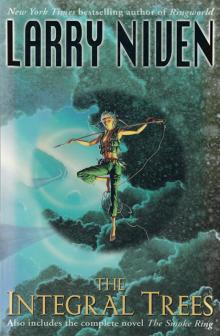 The Integral Trees - Omnibus
The Integral Trees - Omnibus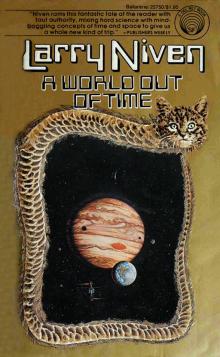 A World Out of Time
A World Out of Time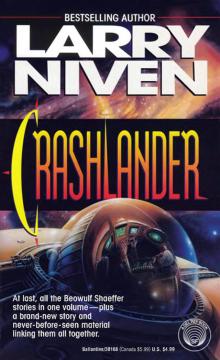 Crashlander
Crashlander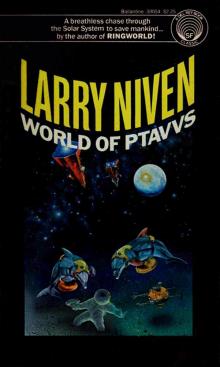 The World of Ptavvs
The World of Ptavvs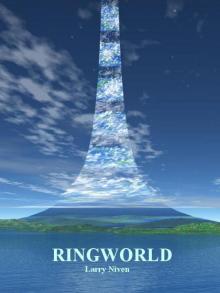 Ringworld
Ringworld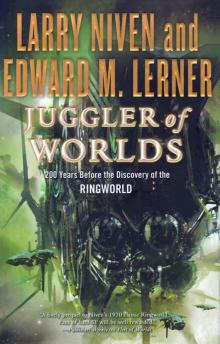 Juggler of Worlds
Juggler of Worlds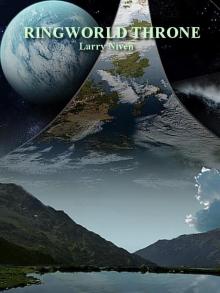 The Ringworld Throne
The Ringworld Throne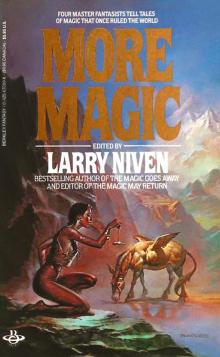 The Magic Goes Away Collection: The Magic Goes Away/The Magic May Return/More Magic
The Magic Goes Away Collection: The Magic Goes Away/The Magic May Return/More Magic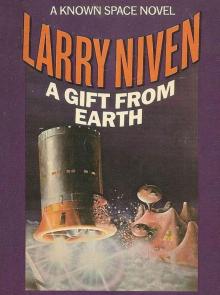 A Gift From Earth
A Gift From Earth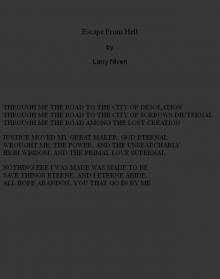 Escape From Hell
Escape From Hell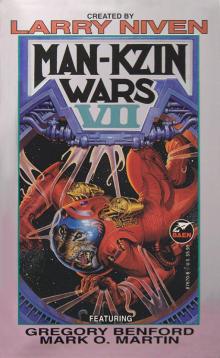 Larry Niven’s Man-Kzin Wars - VII
Larry Niven’s Man-Kzin Wars - VII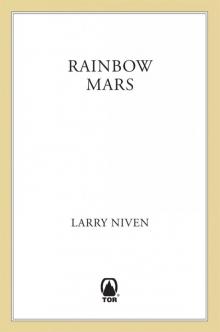 Rainbow Mars
Rainbow Mars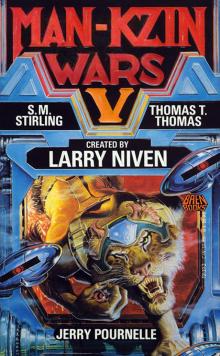 Larry Niven’s Man-Kzin Wars - V
Larry Niven’s Man-Kzin Wars - V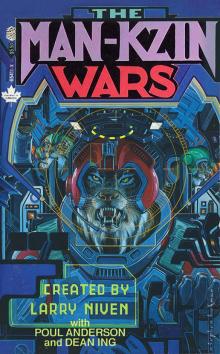 Larry Niven’s Man-Kzin Wars - I
Larry Niven’s Man-Kzin Wars - I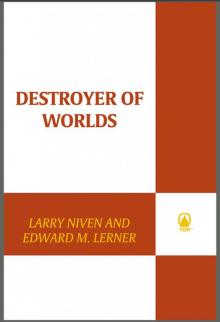 Destroyer of Worlds
Destroyer of Worlds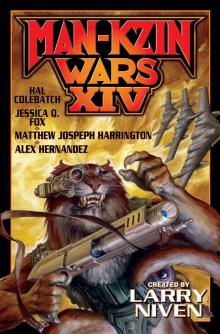 Man-Kzin Wars XIV
Man-Kzin Wars XIV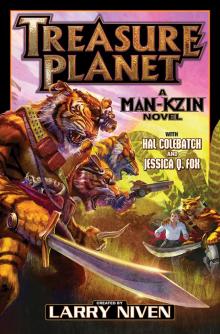 Treasure Planet
Treasure Planet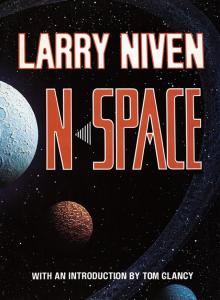 N-Space
N-Space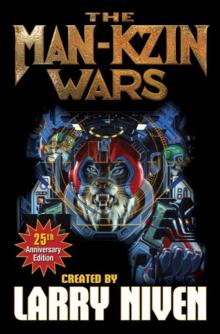 Man-Kzin Wars 25th Anniversary Edition
Man-Kzin Wars 25th Anniversary Edition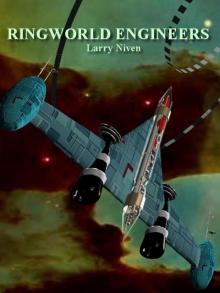 The Ringworld Engineers
The Ringworld Engineers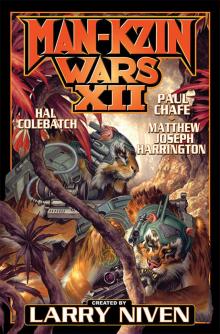 Larry Niven’s Man-Kzin Wars - XII
Larry Niven’s Man-Kzin Wars - XII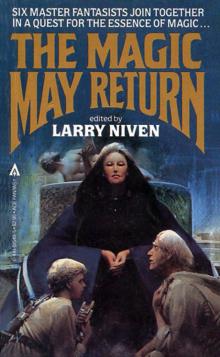 The Magic May Return
The Magic May Return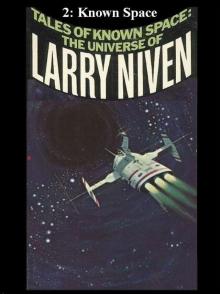 Tales of Known Space: The Universe of Larry Niven
Tales of Known Space: The Universe of Larry Niven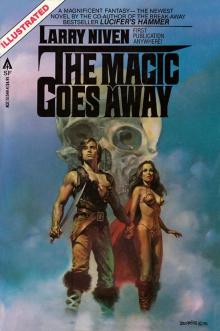 The Magic Goes Away
The Magic Goes Away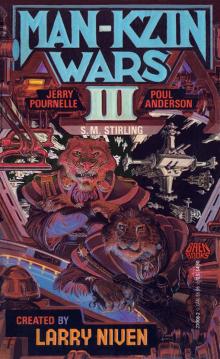 Larry Niven’s Man-Kzin Wars - III
Larry Niven’s Man-Kzin Wars - III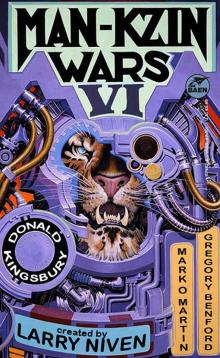 Larry Niven’s Man-Kzin Wars - VI
Larry Niven’s Man-Kzin Wars - VI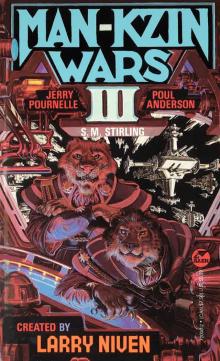 Man-Kzin Wars III
Man-Kzin Wars III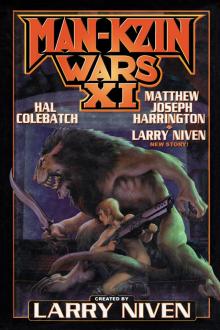 Larry Niven’s Man-Kzin Wars - XI
Larry Niven’s Man-Kzin Wars - XI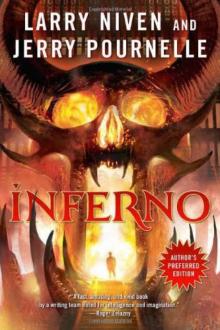 Inferno
Inferno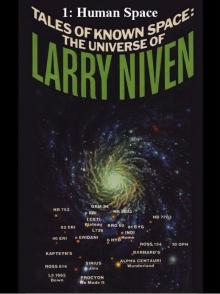 01-Human Space
01-Human Space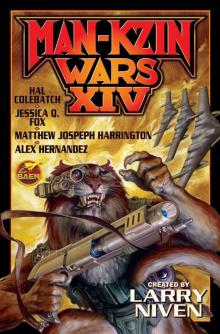 Larry Niven’s Man-Kzin Wars - XIV
Larry Niven’s Man-Kzin Wars - XIV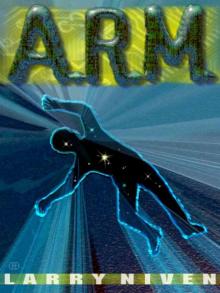 The Long Arm of Gil Hamilton
The Long Arm of Gil Hamilton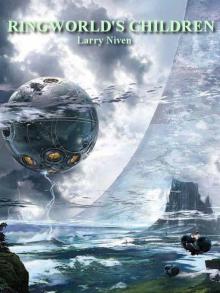 Ringworld's Children
Ringworld's Children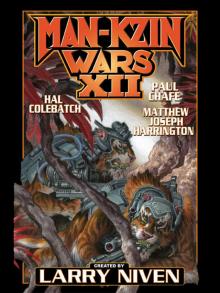 Man-Kzin Wars XII
Man-Kzin Wars XII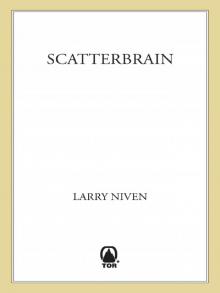 Scatterbrain
Scatterbrain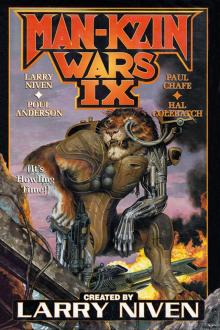 Man-Kzin Wars 9
Man-Kzin Wars 9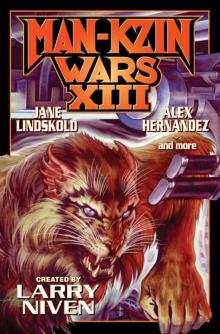 Man-Kzin Wars XIII
Man-Kzin Wars XIII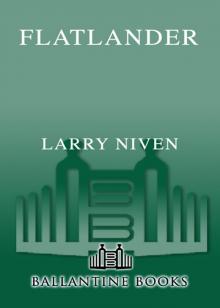 Flatlander
Flatlander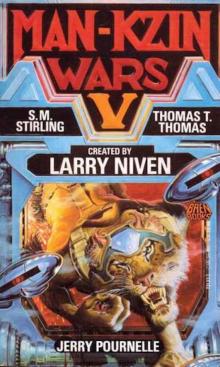 Man-Kzin Wars V
Man-Kzin Wars V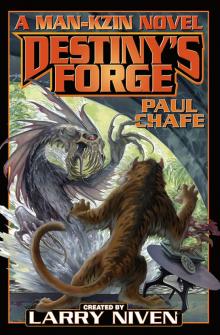 Destiny's Forge
Destiny's Forge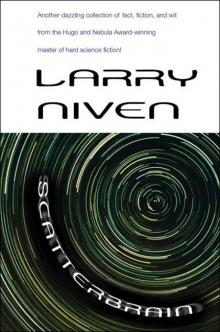 Scatterbrain (2003) SSC
Scatterbrain (2003) SSC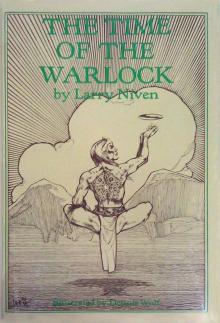 The Time of the Warlock
The Time of the Warlock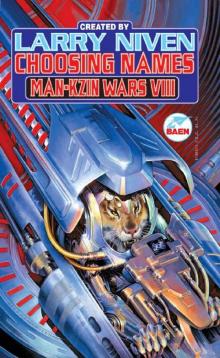 Choosing Names: Man-Kzin Wars VIII
Choosing Names: Man-Kzin Wars VIII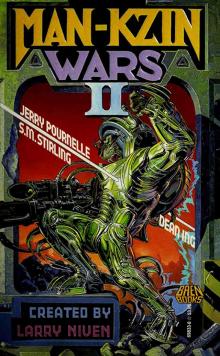 Larry Niven's Man-Kzin Wars II
Larry Niven's Man-Kzin Wars II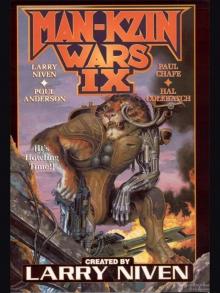 Man-Kzin Wars IX (Man-Kzin Wars Series Book 9)
Man-Kzin Wars IX (Man-Kzin Wars Series Book 9)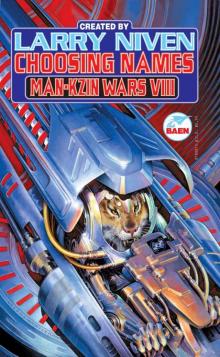 Choosing Names: Man-Kzin Wars VIII (Man-Kzin Wars Series Book 8)
Choosing Names: Man-Kzin Wars VIII (Man-Kzin Wars Series Book 8)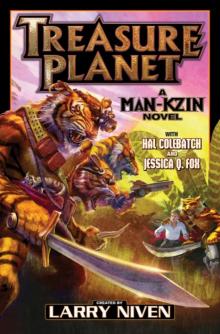 Treasure Planet - eARC
Treasure Planet - eARC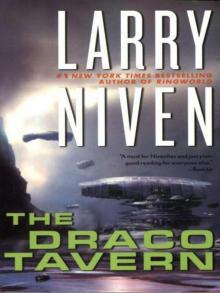 The Draco Tavern
The Draco Tavern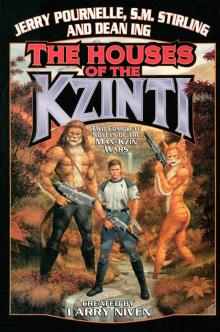 Larry Niven’s Man-Kzin Wars - The Houses of the Kzinti
Larry Niven’s Man-Kzin Wars - The Houses of the Kzinti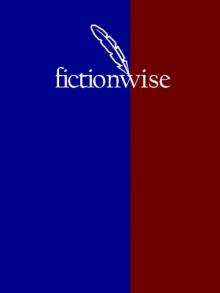 The Fourth Profession
The Fourth Profession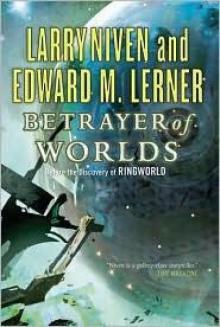 Betrayer of Worlds
Betrayer of Worlds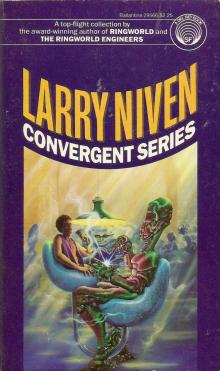 Convergent Series
Convergent Series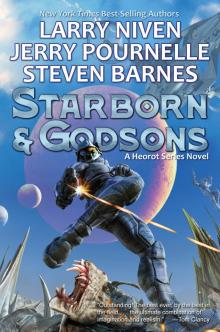 Starborn and Godsons
Starborn and Godsons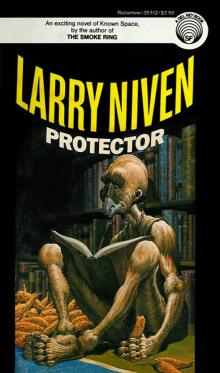 Protector
Protector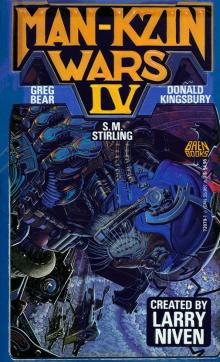 Larry Niven’s Man-Kzin Wars - IV
Larry Niven’s Man-Kzin Wars - IV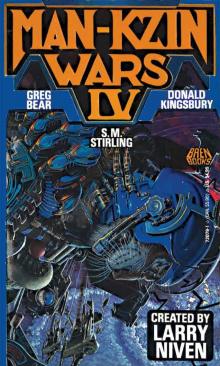 Man-Kzin Wars IV (Man-Kzin Wars Series Book 4)
Man-Kzin Wars IV (Man-Kzin Wars Series Book 4)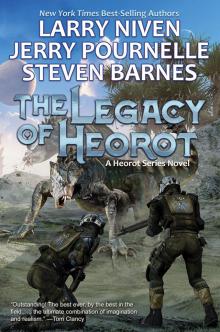 The Legacy of Heorot
The Legacy of Heorot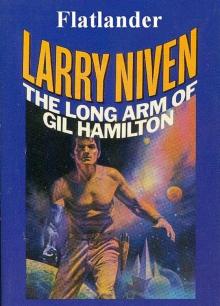 03-Flatlander
03-Flatlander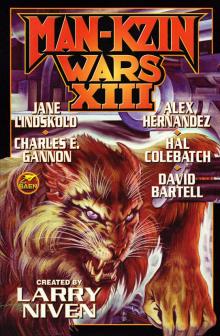 Larry Niven’s Man-Kzin Wars - XIII
Larry Niven’s Man-Kzin Wars - XIII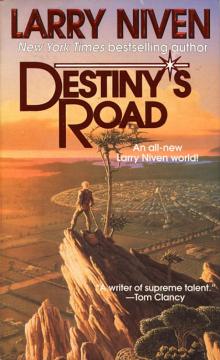 Destiny's Road
Destiny's Road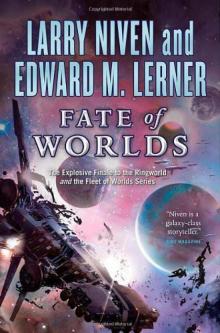 Fate of Worlds
Fate of Worlds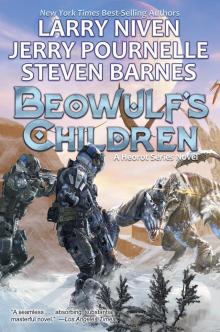 Beowulf's Children
Beowulf's Children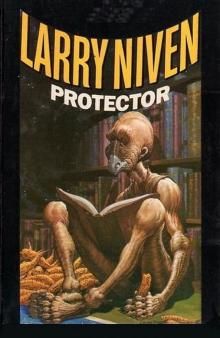 04-Protector
04-Protector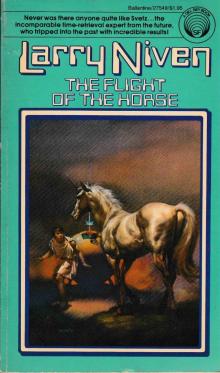 The Flight of the Horse
The Flight of the Horse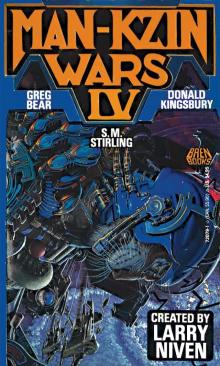 Man-Kzin Wars IV
Man-Kzin Wars IV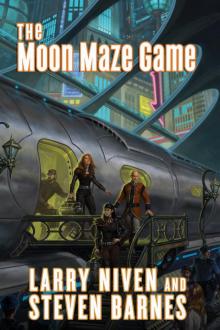 The Moon Maze Game dp-4
The Moon Maze Game dp-4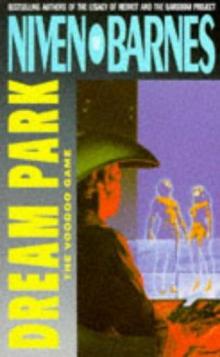 The California Voodoo Game dp-3
The California Voodoo Game dp-3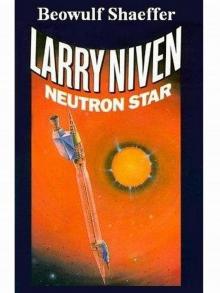 07-Beowulf Shaeffer
07-Beowulf Shaeffer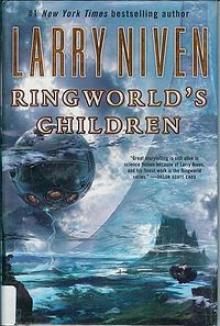 Ringworld's Children r-4
Ringworld's Children r-4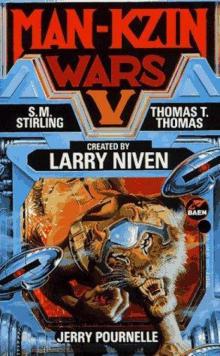 The Man-Kzin Wars 05
The Man-Kzin Wars 05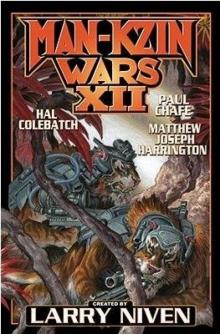 The Man-Kzin Wars 12
The Man-Kzin Wars 12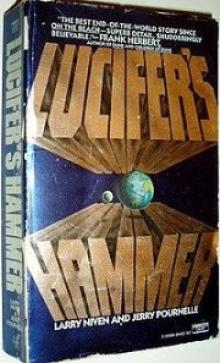 Lucifer's Hammer
Lucifer's Hammer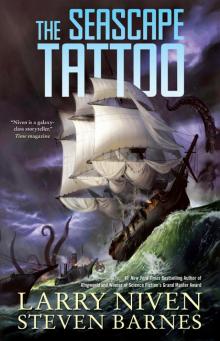 The Seascape Tattoo
The Seascape Tattoo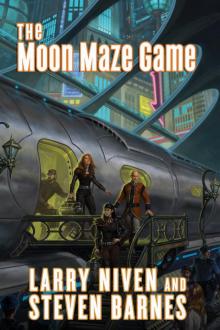 The Moon Maze Game
The Moon Maze Game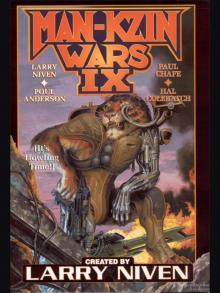 Man-Kzin Wars IX
Man-Kzin Wars IX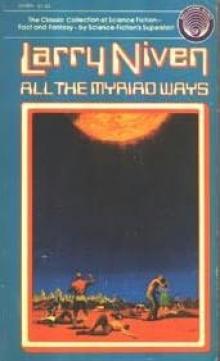 All The Myriad Ways
All The Myriad Ways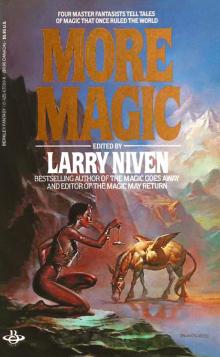 More Magic
More Magic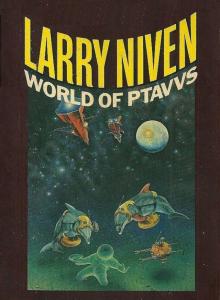 02-World of Ptavvs
02-World of Ptavvs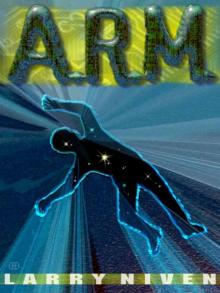 ARM
ARM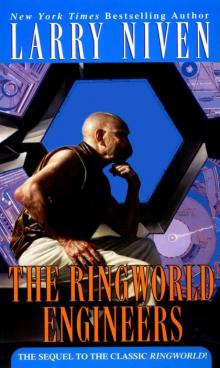 The Ringworld Engineers (ringworld)
The Ringworld Engineers (ringworld)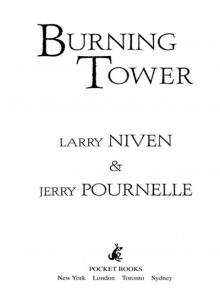 Burning Tower
Burning Tower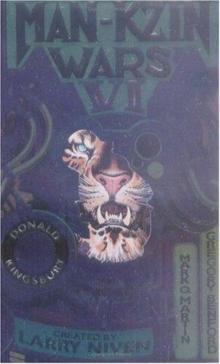 The Man-Kzin Wars 06
The Man-Kzin Wars 06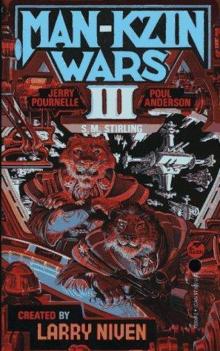 The Man-Kzin Wars 03
The Man-Kzin Wars 03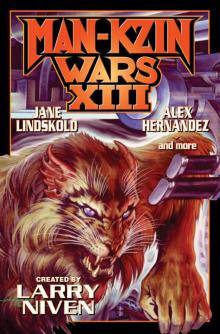 Man-Kzin Wars XIII-ARC
Man-Kzin Wars XIII-ARC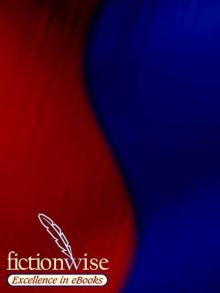 The Hole Man
The Hole Man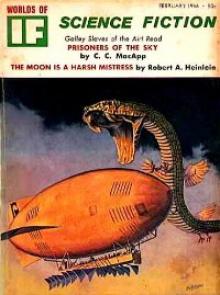 The Warriors mw-1
The Warriors mw-1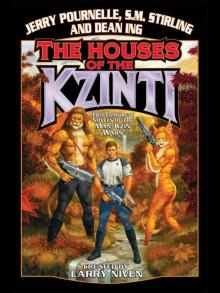 The Houses of the Kzinti
The Houses of the Kzinti The Man-Kzin Wars 07
The Man-Kzin Wars 07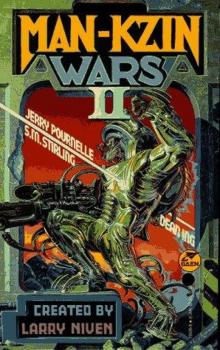 The Man-Kzin Wars 02
The Man-Kzin Wars 02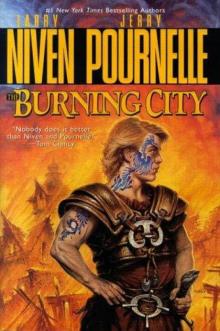 The Burning City
The Burning City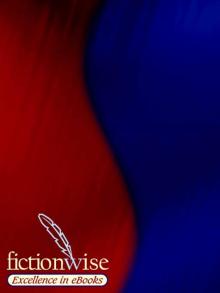 At the Core
At the Core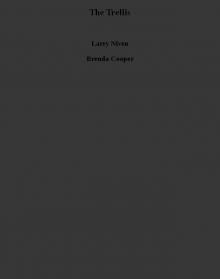 The Trellis
The Trellis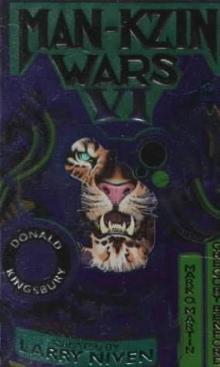 The Man-Kzin Wars 01 mw-1
The Man-Kzin Wars 01 mw-1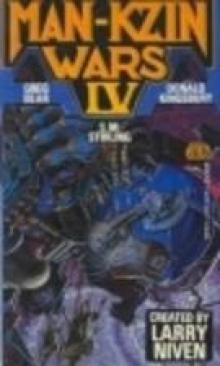 The Man-Kzin Wars 04
The Man-Kzin Wars 04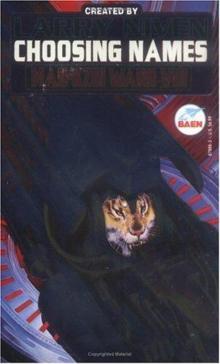 The Man-Kzin Wars 08 - Choosing Names
The Man-Kzin Wars 08 - Choosing Names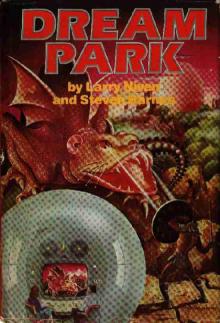 Dream Park
Dream Park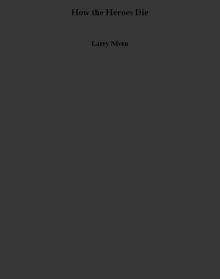 How the Heroes Die
How the Heroes Die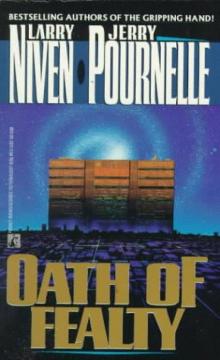 Oath of Fealty
Oath of Fealty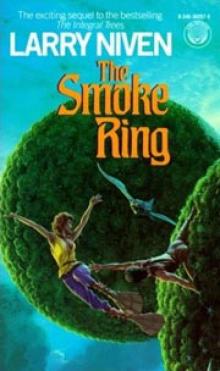 The Smoke Ring t-2
The Smoke Ring t-2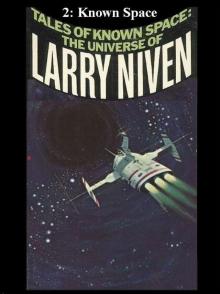 06-Known Space
06-Known Space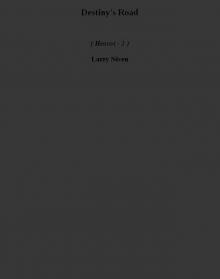 Destiny's Road h-3
Destiny's Road h-3 Flash crowd
Flash crowd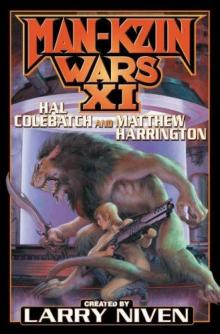 The Man-Kzin Wars 11
The Man-Kzin Wars 11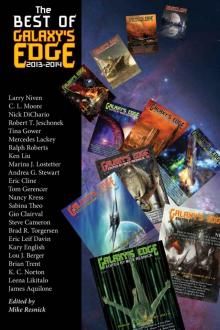 The Best of Galaxy’s Edge 2013-2014
The Best of Galaxy’s Edge 2013-2014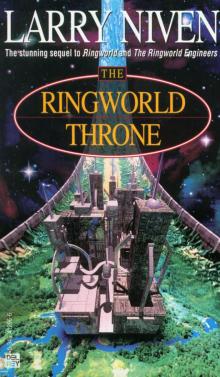 The Ringworld Throne r-3
The Ringworld Throne r-3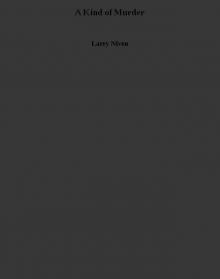 A Kind of Murder
A Kind of Murder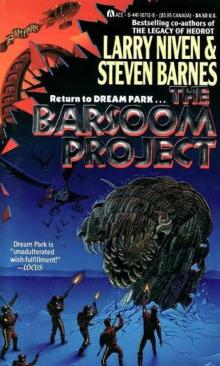 The Barsoom Project dp-2
The Barsoom Project dp-2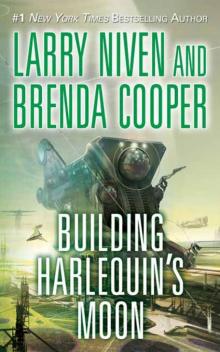 Building Harlequin’s Moon
Building Harlequin’s Moon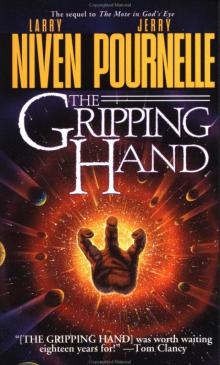 The Gripping Hand
The Gripping Hand The Leagacy of Heorot
The Leagacy of Heorot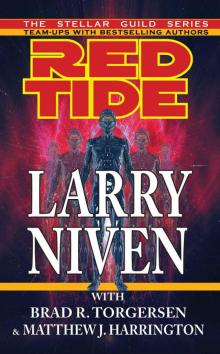 Red Tide
Red Tide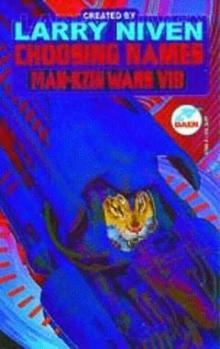 Choosing Names mw-8
Choosing Names mw-8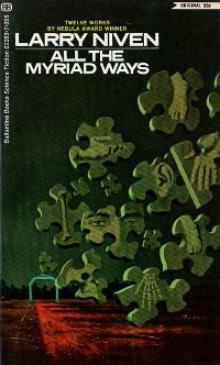 Inconstant Moon
Inconstant Moon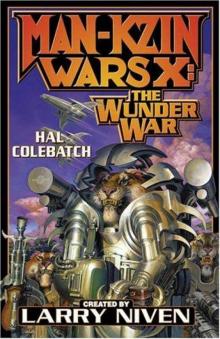 The Man-Kzin Wars 10 - The Wunder War
The Man-Kzin Wars 10 - The Wunder War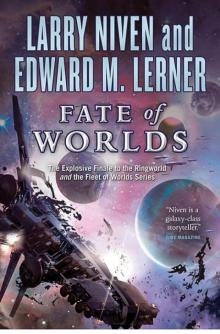 Fate of Worlds: Return From the Ringworld
Fate of Worlds: Return From the Ringworld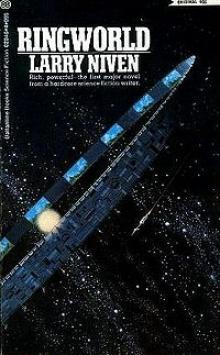 Ringworld r-1
Ringworld r-1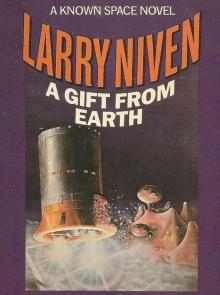 05-A Gift From Earth
05-A Gift From Earth The Integral Trees t-1
The Integral Trees t-1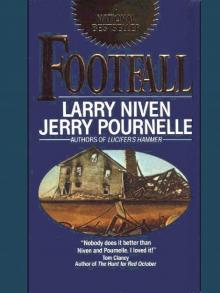 Footfall
Footfall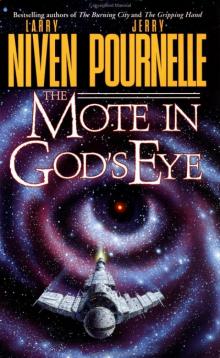 The Mote In God's Eye
The Mote In God's Eye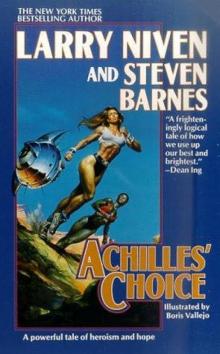 Achilles choice
Achilles choice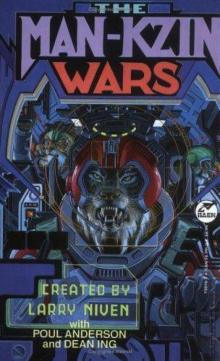 The Man-Kzin Wars 01
The Man-Kzin Wars 01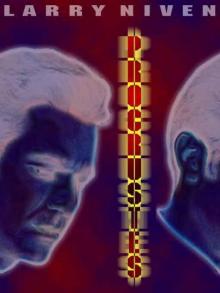 Procrustes
Procrustes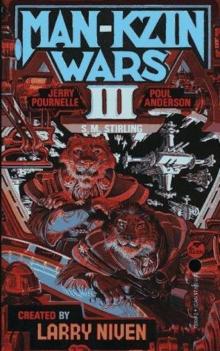 The Man-Kzin Wars 03 mw-3
The Man-Kzin Wars 03 mw-3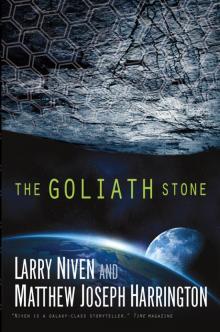 The Goliath Stone
The Goliath Stone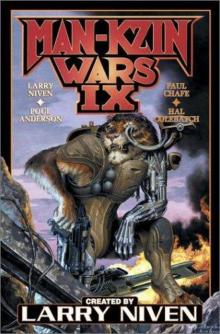 The Man-Kzin Wars 09
The Man-Kzin Wars 09